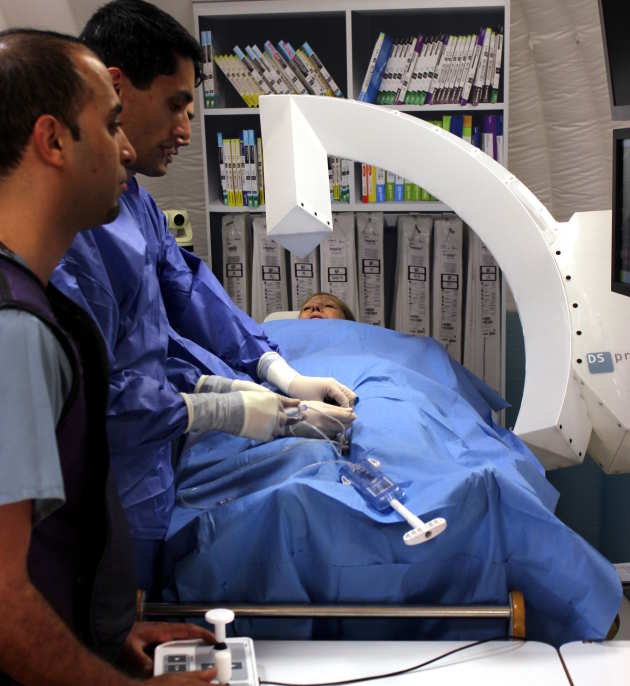Simulated Catheterisation (SimCath)
Funded by EPSRC Impact Acceleration Account
Project summary
 The SimCath project is developing a prototype simulated Catheterisation Laboratory (Cath Lab) suitable for commercialisation. Cath Labs are used to perform a wide range of minimally invasive diagnostic and interventional procedures. A simulated Cath Lab offers a unique training facility for clinicians from both interventional (cardiology, vascular, neurovascular, radiology) and non-interventional (anaesthetics) specialties.
The SimCath project is developing a prototype simulated Catheterisation Laboratory (Cath Lab) suitable for commercialisation. Cath Labs are used to perform a wide range of minimally invasive diagnostic and interventional procedures. A simulated Cath Lab offers a unique training facility for clinicians from both interventional (cardiology, vascular, neurovascular, radiology) and non-interventional (anaesthetics) specialties.
The project capitalises on the Centre’s wealth of expertise and experience in simulation and state-of-the-art clinical practice, building on several strands of previous work within the Centre and the SiMMS group. These include the development of simulator prototypes for angiography and interventional cardiology training (pictured right), a novel multi-port haptic interface for the simulation of image-guided endovascular interventions, a simulated Cath Lab setting and iCAST, the Imperial Cardiovascular Simulation Training programme.
Three phases of the project are running in parallel:
- Development of simulation software
- Redesigned haptic interface to support multiple access interventions
- Redesign of the simulated Cath Lab components
A key focus of the project will be designing with commercialisation in mind. In particular, a modular approach will be taken to all aspects of the project. Hardware will be designed using low-volume manufacturing techniques and software will be ported to a commercially viable platform, suitable for expansion.
Project aims
The aim of the project is to develop a commercial prototype of a simulated Cath Lab. It will feature a new modular software structure which integrates functionality to support multi-port advanced interventions and control of a motorised mock C-arm. The various components of the simulated Cath Lab will feature a consistent colour scheme and branding.
Progress to date and outputs
- Initial consultation and redesign of simulated setting, including working prototype of C-arm mechanism
- Porting of original software to Unity game engine
- Engaging clinicians to finalise requirement specification for haptic interface


